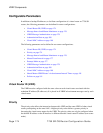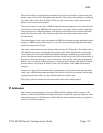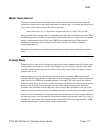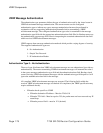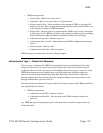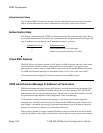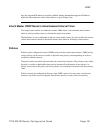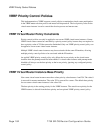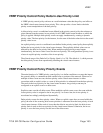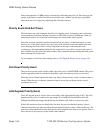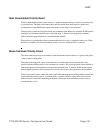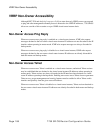
VRRP Priority Control Policies
Page 182 7750 SR OS Router Configuration Guide
VRRP Priority Control Policies
This implementation of VRRP supports control policies to manipulate virtual router participation
in the VRRP master election process and master self-deprecation. The local priority value for the
virtual router instance is used to control the election process and master state.
VRRP Virtual Router Policy Constraints
Priority control policies can only be applied to non-owner VRRP virtual router instances. Owner
VRRP virtual routers cannot be controlled by a priority control policy because they are required to
have a priority value of 255 that cannot be diminished. Only one VRRP priority control policy can
be applied to a non-owner virtual router instance.
Multiple VRRP virtual router instances may be associated with the same IP interface, allowing
multiple priority control policies to be associated with the IP interface.
An applied VRRP priority control policy only affects the in-use priority on the virtual router
instance when the preempt mode has been enabled. A virtual router instance with preempt mode
disabled will always use the base priority as the in-use priority, ignoring any configured priority
control policy.
VRRP Virtual Router Instance Base Priority
Non-owner virtual router instances must have a base priority value between 1 and 254. The value 0
is reserved for master termination. The value 255 is reserved for owners. The default base priority
for non-owner virtual router instances is the value 100.
The base priority is the starting priority for the VRRP instance. The actual in-use priority for the
VRRP instance is derived from the base priority and an optional VRRP priority control policy.



